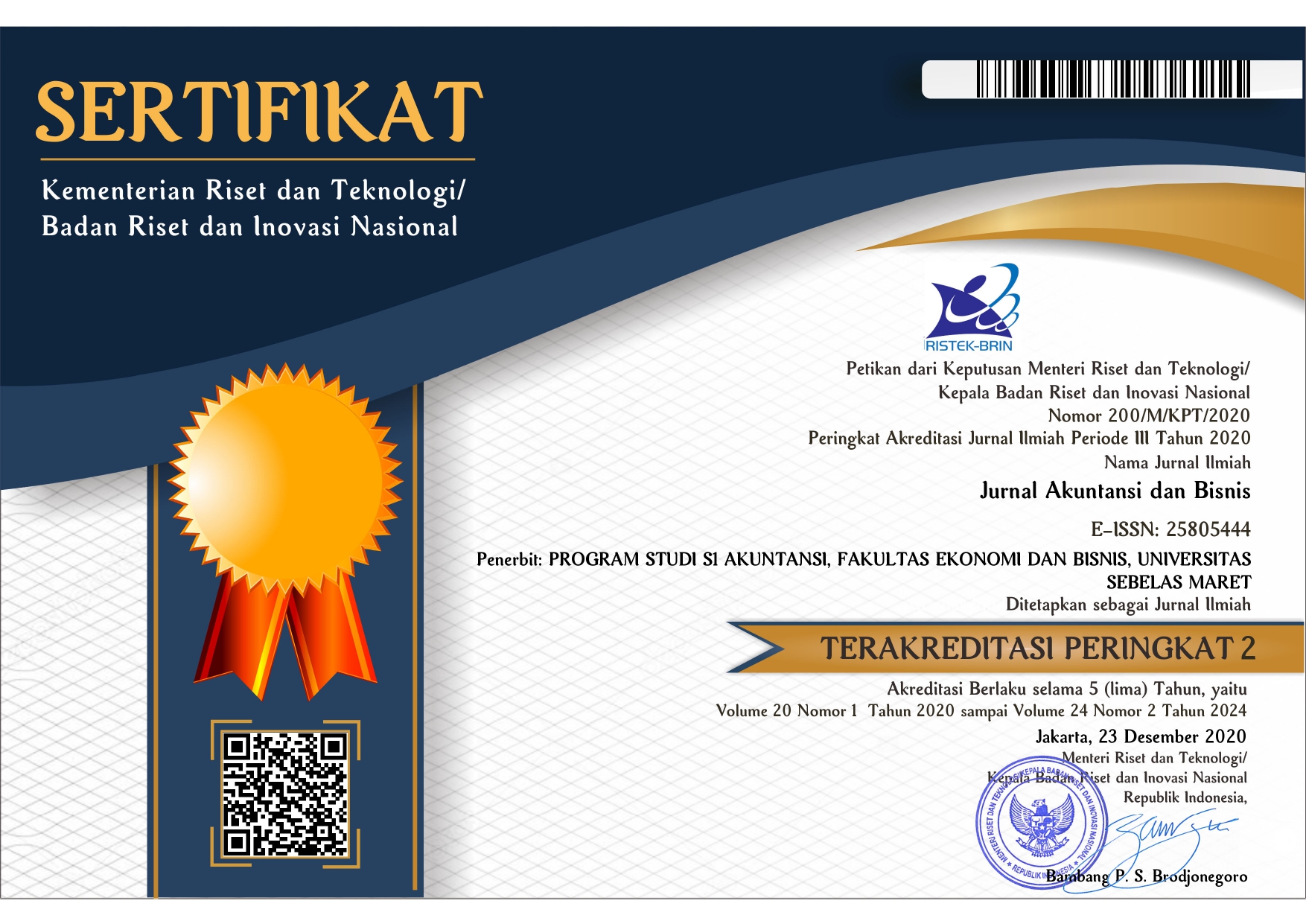Sistem Tarif Tunggal vs. Tarif Berdasar Jarak: Studi Kasus Calon Pelanggan LRT Jabodebek
Abstract
Keywords
Full Text:
PDFReferences
Anciaes, P., Metcalfe, P., Heywood, C., & Sheldon, R. (2019). The impact of fare complexity on rail demand. Transportation Research Part A: Policy and Practice, 120(January), 224–238. https://doi.org/10.1016/j.tra.2018.12.020
Azhdar, R., & Nazemi, A. (2020). Modeling of incentive-based policies for demand management for the Tehran subway. Travel Behaviour and Society, 20(April), 174–180. https://doi.org/10.1016/j.tbs.2020.03.014
Batarce, M., & Galilea, P. (2018). Cost and fare estimation for the bus transit system of Santiago. Transport Policy, 64, 92–101. https://doi.org/10.1016/j.tranpol.2018.01.002
Cooper, D. R., & Schindler, P. S. (2014). Business research methods (Twelfth). MCGraw-Hill Education.
De Grange, L., Troncoso, R., & González, F. (2012). An empirical evaluation of the impact of three urban transportation policies on transit use. Transport Policy, 22, 11–19. https://doi.org/10.1016/j.tranpol.2012.04.003
Deng, L., Zhang, Z., Liu, K., Zhou, W., & Ma, J. (2014). Fare optimality analysis of urban rail transit under various objective functions. Discrete Dynamics in Nature and Society, 2014. https://doi.org/10.1155/2014/910736
Ha, J., Lee, S., & Ko, J. (2020). Unraveling the impact of travel time, cost, and transit burdens on commute mode choice for different income and age groups. Transportation Research Part A: Policy and Practice, 141(May), 147–166. https://doi.org/10.1016/j.tra.2020.07.020
Huang, D., Liu, Z., Liu, P., & Chen, J. (2016). Optimal transit fare and service frequency of a nonlinear origin-destination based fare structure. Transportation Research Part E: Logistics and Transportation Review, 96, 1–19. https://doi.org/10.1016/j.tre.2016.10.004
Li, X., Tang, J., Hu, X., & Wang, W. (2020). Assessing intercity multimodal choice behavior in a Touristy City: A factor analysis. Journal of Transport Geography, 86(July), 102776. https://doi.org/10.1016/j.jtrangeo.2020.102776
Liu, R., & Li, A. (2012). Forecasting high-speed rail ridership using a simultaneous modeling approach. Transportation Planning and Technology, 35(5), 577–590. https://doi.org/10.1080/03081060.2012.701816
McGreevy, M. (2021). Cost, reliability, convenience, equity or image? The cases for and against the introduction of light rail and bus rapid transit in inners suburban Adelaide, South Australia. Case Studies on Transport Policy, 9(1), 271–279. https://doi.org/10.1016/j.cstp.2021.01.001
Perhubungan, K. (2017). Peraturan Menteri Perhubungan Republik Indonesia Nomor PM 118 Tahun 2017 Tentang Penyelenggaraan Kereta Api Ringan Terintegrasi Di Wilayah Jakarta, Bogor, Depok, dan Bekasi.
Rachman, F. F., Nooraeni, R., & Yuliana, L. (2021). Public Opinion of Transportation integrated (Jak Lingko), in DKI Jakarta, Indonesia.
Procedia Computer Science, 179(2020), 696–703. https://doi.org/10.1016/j.procs.2021.01.057
Sekaran, U. & R. B. (2016). Research Methods for Business. A Skill - Building Approach Seventh Edition, 1–447.
Socorro, M. P., & Betancor, O. (2020). Air transport subsidies for resident passengers: The unexpected effects on competition. Research in Transportation Economics, 79(November), 100772. https://doi.org/10.1016/j.retrec.2019.100772
Song, S., Sun, Q., Wang, Z., & Zou, X. (2019). Commuting subsidy and burden: Evidence from Tianjin, China. Case Studies on Transport Policy, 7(3), 574–582. https://doi.org/10.1016/j.cstp.2019.05.002
Tjahjono, T., Kusuma, A., & Septiawan, A. (2020). The Greater Jakarta Area Commuters Travelling Pattern. Transportation Research Procedia, 47(2019), 585–592. https://doi.org/10.1016/j.trpro.2020.03.135
Truong, D., Pan, J. Y., & Buaphiban, T. (2020). Low cost carriers in Southeast Asia: How does ticket price change the way passengers make their airline selection? Journal of Air Transport Management, 86(May), 101836. https://doi.org/10.1016/j.jairtraman.2020.101836
Tsai, F. M., Chien, S. I. J., & Spasovic, L. N. (2008). Optimizing distance-based fares and headway of an intercity transportation system with elastic demand and trip length differentiation. Transportation Research Record, 2089, 101–109. https://doi.org/10.3141/2089-13
Wang, Q., & Deng, L. (2019). Integrated optimization method of operational subsidy with fare for urban rail transit. Computers and Industrial Engineering, 127(May 2018), 1153–1163. https://doi.org/10.1016/j.cie.2018.05.003
Wang, S., & Qu, X. (2017). Station choice for Australian commuter rail lines: Equilibrium and optimal fare design. European Journal of Operational Research, 258(1), 144–154. https://doi.org/10.1016/j.ejor.2016.08.040
Wang, S., Zhang, W., & Qu, X. (2018). Trial-and-error train fare design scheme for addressing boarding/alighting congestion at CBD stations. Transportation Research Part B: Methodological, 118, 318–335. https://doi.org/10.1016/j.trb.2018.11.003
Whelan, G., & Johnson, D. (2004). Modelling the impact of alternative fare structures on train overcrowding. International Journal of Transport Management, 2(1), 51–58. https://doi.org/10.1016/j.ijtm.2004.04.004
Xu, S. X., Liu, T. L., Huang, H. J., & Liu, R. (2018). Mode choice and railway subsidy in a congested monocentric city with endogenous population distribution. Transportation Research Part A: Policy and Practice, 116(June), 413–433. https://doi.org/10.1016/j.tra.2018.07.001
Yu, M. M., Chen, L. H., & Hsiao, B. (2018). A performance-based subsidy allocation of ferry transportation: A data envelopment approach. Transport Policy, 68(March), 13–19. https://doi.org/10.1016/j.tranpol.2018.04.004
Zolnik, E. J., Malik, A., & Irvin-Erickson, Y. (2018). Who benefits from bus rapid transit? Evidence from the Metro Bus System (MBS) in Lahore. Journal of Transport Geography, 71(June), 139–149. https://doi.org/10.1016/j.jtrangeo.2018.06.019
DOI: http://dx.doi.org/10.20961/jab.v21i2.698
Jurnal Akuntansi dan Bisnis (JAB)
ISSN 1412-0852 (print), 2580-5444 (online)
Published by Accounting Study Program, Faculty of Economics and Business, Universitas Sebelas Maret, Indonesia

JAB on http://jab.fe.uns.ac.id/index.php/jab is licensed under a Creative Commons Attribution-ShareAlike 4.0 International License










